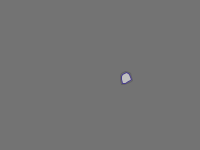trash-detection Computer Vision Project
Updated 2 years ago
5.3k
views226
downloadsMetrics
Here are a few use cases for this project:
-
Environmental Cleanliness: The "trash-detection" computer vision model can be integrated into drones for monitoring litter in public spaces like parks, beaches, or city streets. By identifying types of trash, authorities can assess the effectiveness of waste management systems and create strategic clean-up campaigns.
-
Waste Sorting: Automated waste sorting machines can utilize this model to identify and segregate different types of waste materials for efficient recycling and disposal. This can drastically improve the efficiency of waste treatment facilities and promote sustainable practices.
-
Damage Control at Sea: Equipping maritime vehicles like boats or unmanned sea vessels with this model can detect, track, and collect litter floating at sea, mitigating the impact on marine life and contributing to cleaner oceans.
-
Smart Cities: This model can be used in surveillance cameras across cities as part of a "smart city" solution. It can help identify littered areas and facilitate quick cleaning responses, promoting a cleaner and healthier urban environment.
-
Food Industry Waste Management: In food plants and kitchens, this model can be used to identify and separate food waste from other trash, promoting more efficient composting or disposal processes. It could aid in tracking the progress towards waste reduction goals within the food industry as well.
Use This Trained Model
Try it in your browser, or deploy via our Hosted Inference API and other deployment methods.
Build Computer Vision Applications Faster with Supervision
Visualize and process your model results with our reusable computer vision tools.
Cite This Project
If you use this dataset in a research paper, please cite it using the following BibTeX:
@misc{
trash-detection-otdmj_dataset,
title = { trash-detection Dataset },
type = { Open Source Dataset },
author = { nora slimani },
howpublished = { \url{ https://universe.roboflow.com/nora-slimani/trash-detection-otdmj } },
url = { https://universe.roboflow.com/nora-slimani/trash-detection-otdmj },
journal = { Roboflow Universe },
publisher = { Roboflow },
year = { 2023 },
month = { may },
note = { visited on 2025-02-13 },
}
Similar Projects
See More















